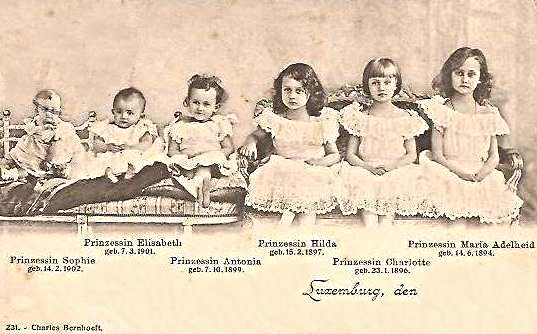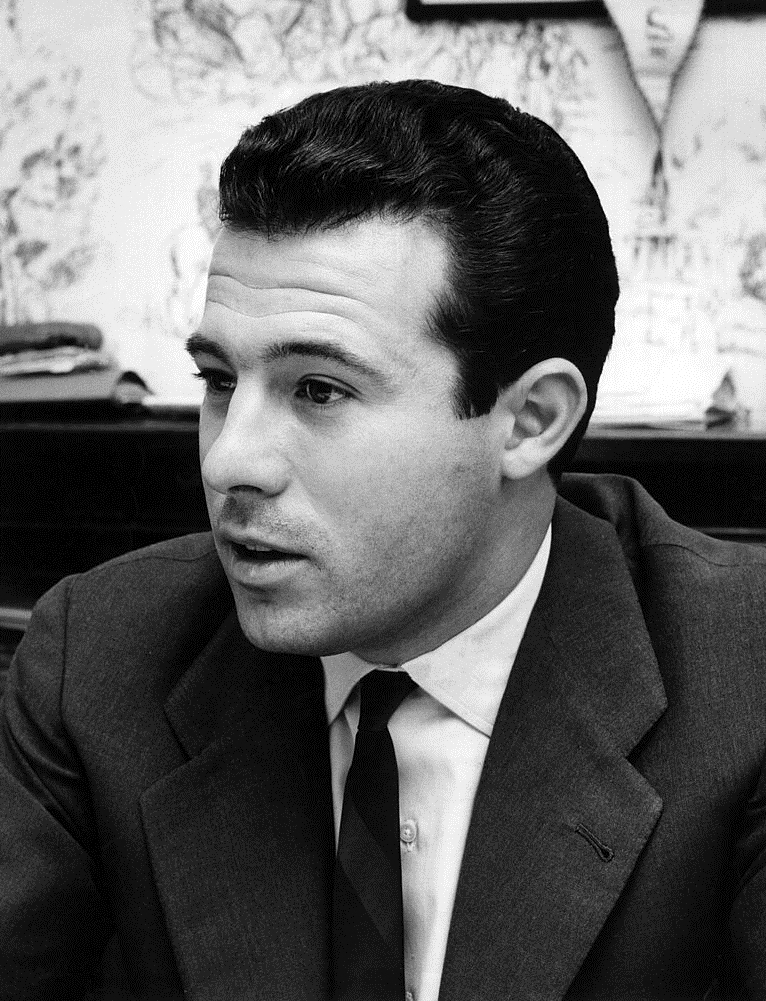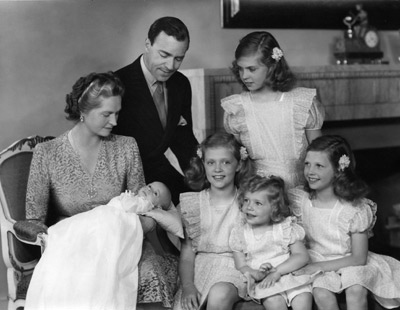 |
| Prince Carl Philip and Princess Sofia on their wedding day By Frankie Fouganthin via Wikimedia Commons |
Of course, this is not the first royal baby boom in history. Back when royal families were larger and more plentiful, they were fairly common. Queen Victoria had 22 descendants born in the 1890s, five born in the year of her death, and four more in the year that followed. The most important royal baby boom, in my opinion, was the race to provide an heir for the British throne almost 200 years ago. In the space of two months in 1819, four royal babies was born: two in March and two in May--Queen Victoria was the third of those babies. A similar event happened in 1964, when The Queen, her sister Princess Margaret, her cousin Princess Alexandra, and her cousin-in-law The Duchess of Kent each gave birth between February 29 (yes, Leap Day!) and May 1. Those children are known today, respectively, as The Earl of Wessex, Lady Sarah Chatto, James Ogilvy, and Lady Helen Taylor.
So, I thought I'd look at other recent baby booms among the current monarchies. Looking only at babies whose mother's had royal status at the time of the birth (so only dynastic marriages) here are the tops from the last century in each of today's Kingdoms.
Belgium: Six babies in 32 months
The Belgian monarchy was created just about 200 years ago with a prince selected from a relatively minor German princely house--however, the first King was an uncle of both Queen Victoria and her husband, Prince Albert. They have not been very fortunate dynastically, with their few male heirs often dying without children and women banned from inheriting the throne until 1991. This has meant a relatively smaller number of royal births, only 32 within the last century and none at all in the last seven years. So, the biggest royal baby boom is fairly recent, beginning with the birth of Princess Astrid's youngest daughter, Laetitia (who is styled as a Princess of Belgium, through her mother, and an Archduchess of Austria, through her father) in April 2003 and concludes with the birth Prince Laurent's youngest children, the twin Princes Nicolas and Aymeric, in December 2005. Interestingly the next biggest royal baby boom in the Belgian family also concluded with twins, the 1957 birth of Prince Jean and Princess Margaretha of Luxembourg, whose mother had been Princess Josephine Charlotte of Belgium.
Denmark: Thirty-five babies in 9 years
 |
| Alexander & Ludwig of Hesse via Wikimedia Commons |
.jpg) |
| Alexandra of Kent By Harry Pot/Anefo via Wikimedia Commons |
 |
| Harald of Norway By Anders Beer Wilse via Wikimedia Commons |
 |
| Margrethe of Denmark via Wikimedia Commons |
.jpg) |
| Constantine of Greece By Peeperman via Wikimedia Commons |
The Danish royal family is one of the most ancient and in the last 150 or so years, it has been incredibly prolific, while also marrying into royal families across Europe. One of its princes was selected as King of Greece in 1863 and another as King of Norway in 1905. Because all of the members of the Greek branch of the family, including those born in this century, continue to be recognized as Princes of Denmark, the number of living royals in the extended family is larger than in any other current monarchy. The current King of Spain was born to a Greek/Danish royal mother, the current King of Norway had a father who was born a Danish prince, the children of the current Queen of England have a father who was born as a Greek/Danish prince, and three of the English Queen's first cousins had a Greek/Danish mother. In the last few decades, this big dynasty has averaged only one or two births a year, but in the first half of the last century, they were often producing four or five children a year. The most productive decade was between 1933 and 1942, when 35 babies were born to Danish or Greek/Danish royals. (I'm calling this nine years because amazingly none were born at all in 1941--I'd say World War II had something to do with this but a total of 20 were conceived during the war.) Thirteen of these 35, or more than a third, were nieces and nephews of Prince Philip of Greece, who is better known today as The Duke of Edinburgh, consort of Queen Elizabeth. Among this subset were all but the eldest of the "cursed" Hesse children--the eldest had been born in 1931. Philip's sister, Cecilie and her husband were killed in a plane crash in 1937 on their way to a family wedding. Their two oldest children died with them, and the baby she was carrying was stillborn in the crash. Their only other child died a year and a half later from meningitis.
Among the most notable folks born in this huge royal baby boom are the current Duke of Kent (1933), his sister Princess Alexandra (1935), and brother Prince Michael of Kent (1942), whose mother was Princess Marina of Greece and Denmark. Others in the crowded nurseries were the current King of Norway (1937) and his sisters, whose father King Olav V of Norway was born Prince Alexander of Denmark. Ex-King Constantine of Greece (1940), his sister Queen Sophia of Spain (1938), and the reigning Queen Margrethe II of Denmark (1940) also were born in this time period.
Luxembourg: Eleven babies in 42 months
 |
| Six daughters of Grand Duke William; mothers of the boom. By Charles Bernhoeft via Wikimedia Commons |
The Netherlands: Five babies in 21 months
Norway: Three babies in 24 months
Norway has the newest and smallest royal family. Norway selected a king from the Danish royal family in 1905 and he had only one son, who had just three children. Since the creation of the independent Norwegian monarchy 110 years ago, there have only been 18 royal births. So, it is not surprising that their boom is so small and so recent. It includes the two eldest daughters of Princess Martha Louise and the oldest child of Crown Prince Haakon. Maud Behn was born in April 2003, Princess Ingrid Alexandra in January 2004, and Leah Behn in April 2005. Only two other royal children have arrived in the decade since.
Spain: Eleven babies in 39 months
 |
| Alfonso, French pretender By Angelo Cozzi via Wikimedia Commons |
Sweden: Six babies in 27 months
 |
| Baby Carl Gustav with his parents and his sisters By Atelje Jaeger via Wikimedia Commons |
The United Kingdom: Four babies in 27 months
Leaving the 1964 boom out (see above), the next one occurred between March 1980 with the birth of Lady Rose Windsor Gilman to The Duchess of Gloucester and June 1982, when The Princess of Wales delivered Prince William. Between those births Princess Anne had Zara Phillips and Princess Michael of Kent had Lady Gabriella Windsor. These royal darlings are now in their early 30s.